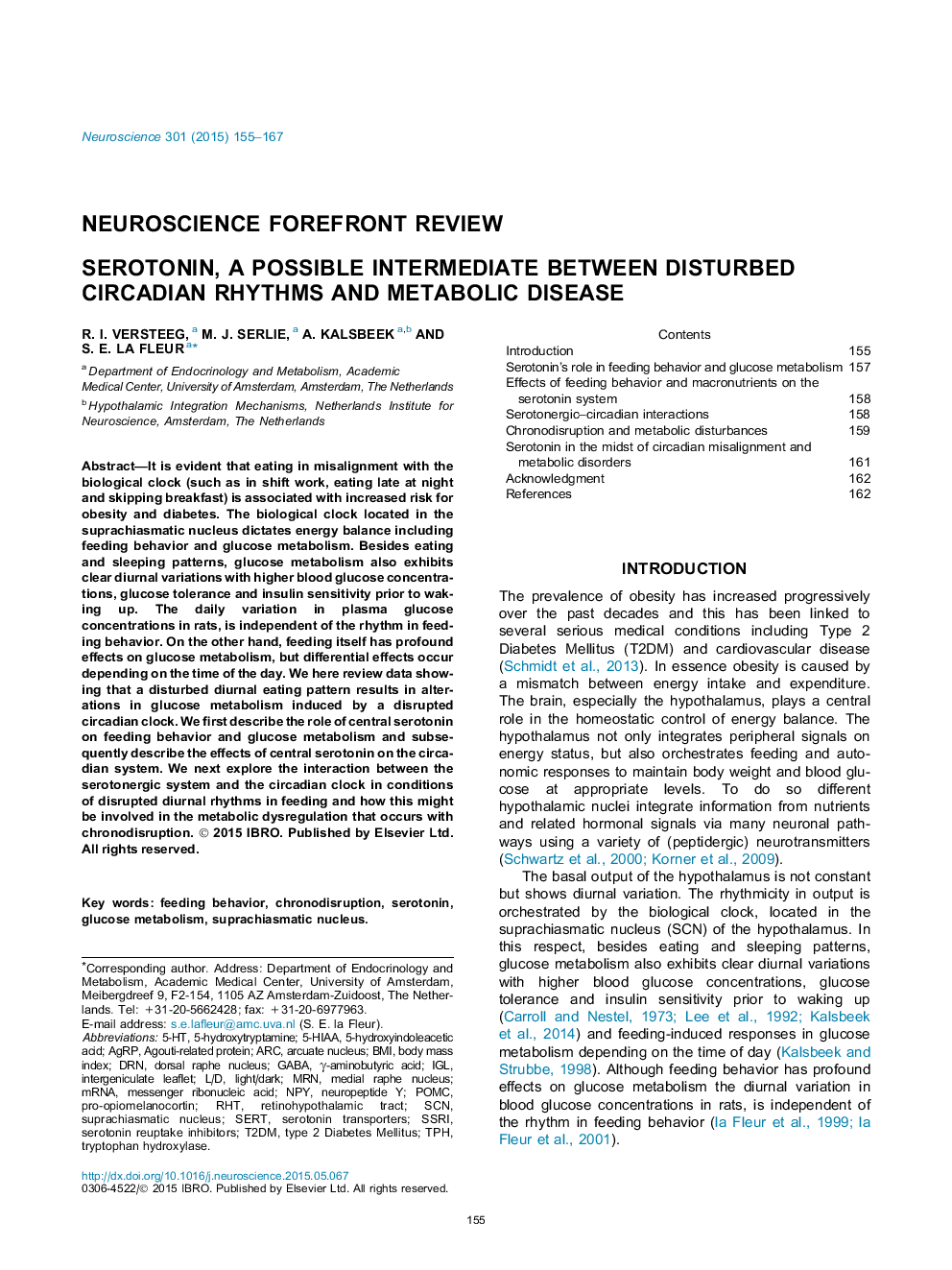| کد مقاله | کد نشریه | سال انتشار | مقاله انگلیسی | نسخه تمام متن |
|---|---|---|---|---|
| 6272072 | 1614775 | 2015 | 13 صفحه PDF | دانلود رایگان |
- The biological clock located in the suprachiasmatic nucleus dictates glucose metabolism.
- Eating at the wrong time according to your biological clock puts you at risk of metabolic disease.
- For optimal glucose homeostasis, non-photic and photic input to the suprachiasmatic nucleus should be aligned.
- Serotonin from the raphe nuclei provides feedback to the SCN on eating and activity.
- We propose a novel hypothesis in which serotonin is in the middle of chronodisruption and metabolic disorders.
It is evident that eating in misalignment with the biological clock (such as in shift work, eating late at night and skipping breakfast) is associated with increased risk for obesity and diabetes. The biological clock located in the suprachiasmatic nucleus dictates energy balance including feeding behavior and glucose metabolism. Besides eating and sleeping patterns, glucose metabolism also exhibits clear diurnal variations with higher blood glucose concentrations, glucose tolerance and insulin sensitivity prior to waking up. The daily variation in plasma glucose concentrations in rats, is independent of the rhythm in feeding behavior. On the other hand, feeding itself has profound effects on glucose metabolism, but differential effects occur depending on the time of the day. We here review data showing that a disturbed diurnal eating pattern results in alterations in glucose metabolism induced by a disrupted circadian clock. We first describe the role of central serotonin on feeding behavior and glucose metabolism and subsequently describe the effects of central serotonin on the circadian system. We next explore the interaction between the serotonergic system and the circadian clock in conditions of disrupted diurnal rhythms in feeding and how this might be involved in the metabolic dysregulation that occurs with chronodisruption.
Journal: Neuroscience - Volume 301, 20 August 2015, Pages 155-167
